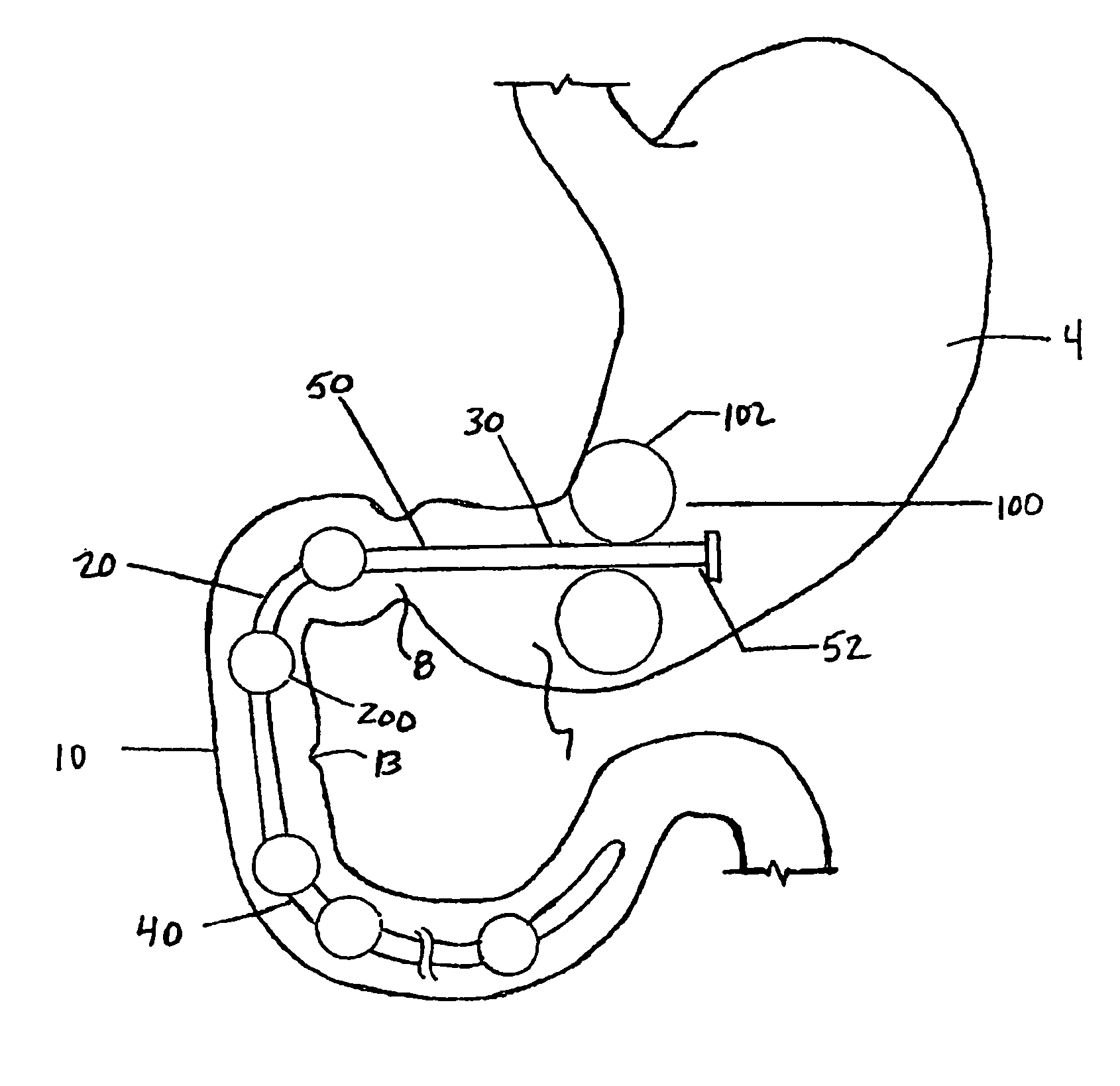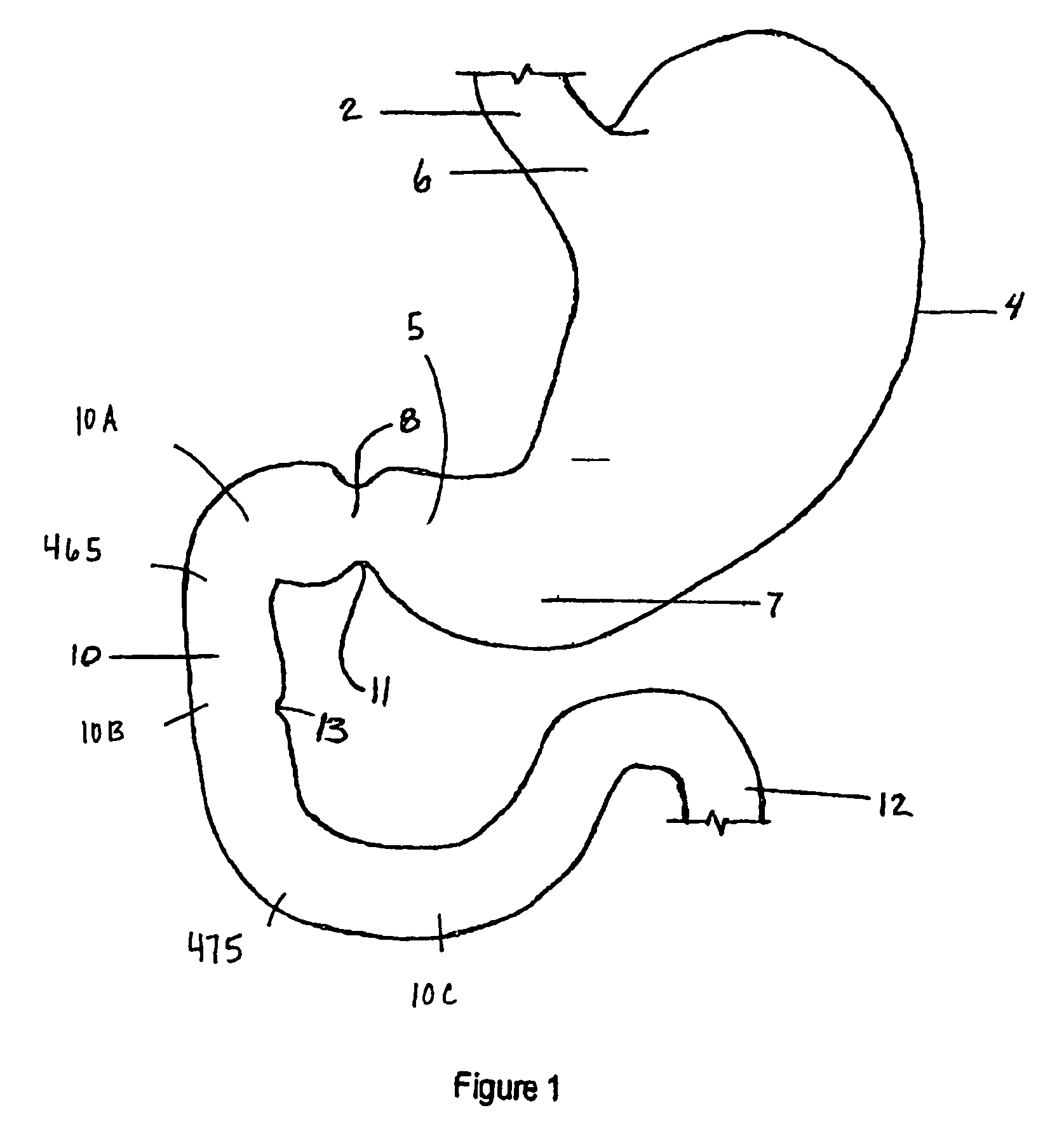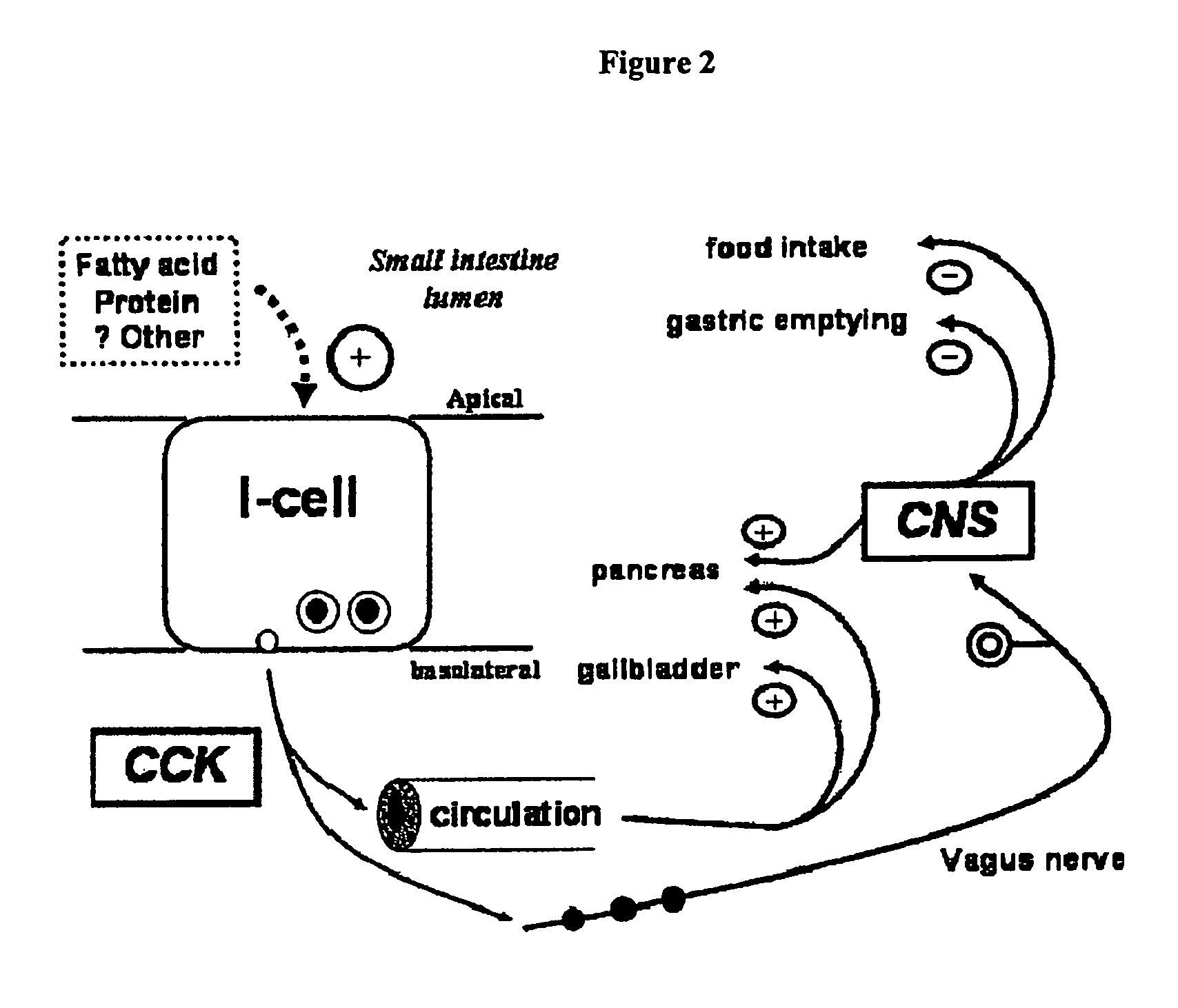Methods and devices to curb appetite and/or reduce food intake
a technology of food intake and appetite reduction, applied in the field of food intake reduction methods and devices, can solve the problems of obesity in the u.s., the rapid growth in the incidence and severity of obesity seen in the u.s., and the difficulty of managing obesity as a health concern, so as to and reduce the likelihood or amount of food intake
- Summary
- Abstract
- Description
- Claims
- Application Information
AI Technical Summary
Benefits of technology
Problems solved by technology
Method used
Image
Examples
Embodiment Construction
[0045]It is to be understood that the present invention is not limited to the particular embodiments, materials, and examples described herein, as these may vary. It is also to be understood that the terminology used herein is used for the purpose of describing particular embodiments only, and is not intended to limit the scope of the present invention. It must be noted that as used herein and in the appended claims, the singular forms “a,”“an,” and “the” include the plural reference unless the context clearly dictates otherwise. Thus, for example, a reference to “a flow reduction element” or “a satiety signal” is a reference to one or more flow reduction elements or satiety signals and includes equivalents thereof known to those skilled in the art and so forth.
[0046]Unless defined otherwise, all technical terms used herein have the same meanings as commonly understood by one of ordinary skill in the art to which this invention belongs. Specific methods, devices, and materials are d...
PUM
 Login to View More
Login to View More Abstract
Description
Claims
Application Information
 Login to View More
Login to View More - R&D
- Intellectual Property
- Life Sciences
- Materials
- Tech Scout
- Unparalleled Data Quality
- Higher Quality Content
- 60% Fewer Hallucinations
Browse by: Latest US Patents, China's latest patents, Technical Efficacy Thesaurus, Application Domain, Technology Topic, Popular Technical Reports.
© 2025 PatSnap. All rights reserved.Legal|Privacy policy|Modern Slavery Act Transparency Statement|Sitemap|About US| Contact US: help@patsnap.com



